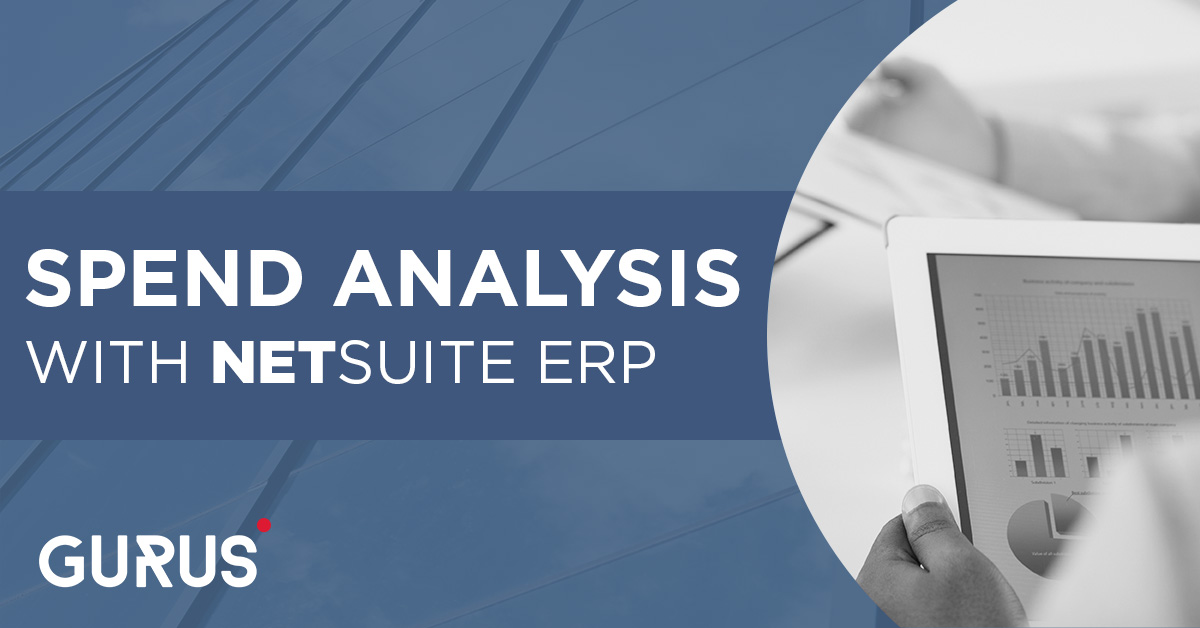
5 Steps for Spend Analysis With NetSuite
A business’ financial statements are an essential part of their financial planning and reporting as they indicate where money is going and coming from. With a cash forecasting model in place, you’ll also know how much of it there’s to work with.
Request More Info From an Expert
The Importance of a Company’s Reporting and Accounting Software
Of course, balance sheets, income statements and cash flow statements are business staples when providing a picture of a company’s financial position. Nonetheless, the “Why” takes a deeper analysis so that organizations learn how to improve operations impacted by direct and indirect spending.
Revenue numbers are usually the first step in financial analysis, but how an organization manages its expenses and costs impacts profitability. So even when revenue flattens due to external factors, spend analysis helps businesses face dips in sales. Also, the outcomes of a spend analysis are basically what helps a business plan for what could be an uncertain future.

Spend Analysis and Your ERP

So, how do you go about a spend analysis with your existing ERP and does it give you all the answers you need? Spend Analysis digs deeper so a business sees its own spend data and now has actionable insights. They can use these to eliminate redundancies and get better supplier visibility.
Most businesses have a limited view of their spending patterns in their ERP systems; they use spreadsheets and data extracts to see cost management inefficiencies.
For example, pinpointing redundant paid services can slip through the cracks under the mountain of held-up data in your ERP system.
Learn more about NetSuite Planning and Budgeting here
Benefits of Business Intelligence for Spend Analysis
How to Implement a Spend Analysis Model for NetSuite
Similar to most Business Intelligence (BI) reporting tools, a successful spend analysis model includes the 5 steps below:
![]()
Define Spend Analysis Objectives
The goal is to focus on the necessary visibility to identify patterns. This will direct the right course of action. You can start by looking at the business units with the highest impact on spending, any top suppliers and expense categories.
For example, your objectives can include getting better visibility into vendor contracts and direct costs that impact profit margins.
![]()
Identify Relevant Data Sources
Where will the data be sourced and who will be using these reports? Expense reports, purchase orders and vendor contracts might be in an ERP or live in many disconnected systems (purchasing solution,vendor management system). Finding key data sources gives you the objectives and the KPIs populating your dashboards.
![]()
Build a Data Model
This is where the heavy lifting begins: where an ETL (Extract, Transform and Load) process is set up. An optimized data model with analytics in a centralized data warehouse will give you the details needed to do the analysis.
Doing this means you’ll need an analytics solution built for NetSuite ERP that can work with these unique data sets.
![]()
Design Reports and Dashboards
Building out the right dashboards in the right format is necessary for effective spend analysis. Although ERP systems are excellent in capturing and tracking transactions, they often lack what-if analysis and visualization.
Data visualization tools pulling spend details from a single source can deliver added functionality - namely spend cubes.
A spend cube lets Finance and Accounting teams compare expenses across suppliers. They can then view which areas are buying these items - along with when and how much. This empowers businesses to make better buying decisions in the future.
![]()
Share and Take Action
The final step is to ensure the relevant stakeholders are clearly informed on the changes needed to improve spending. Why do we do this? So each group is given specific actions and takeaways on their buying and spending. These are the actions that’ll now impact the current and future costs of the organization.
For example, a Sales Manager may be informed of subscription services that are no longer needed. Or a Procurement Director should reach out to some of their suppliers, who have now been flagged to renegotiate contract terms.
To learn more about how you can benefit from a comprehensive spend analytics solution tailored for NetSuite, contact GURUS Solutions today.
Request More Info From an Expert
